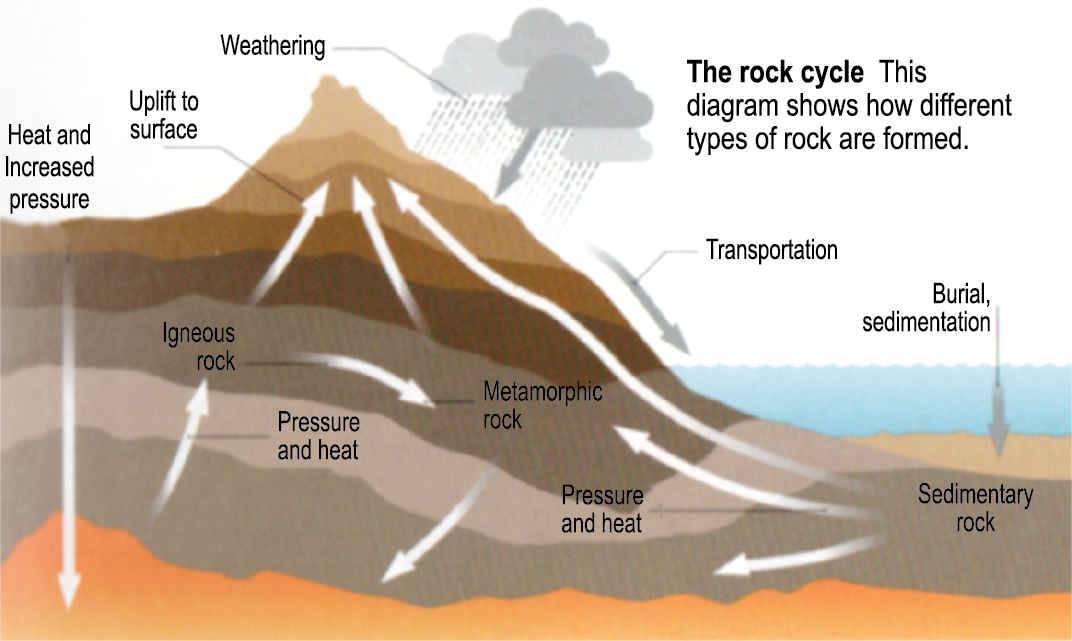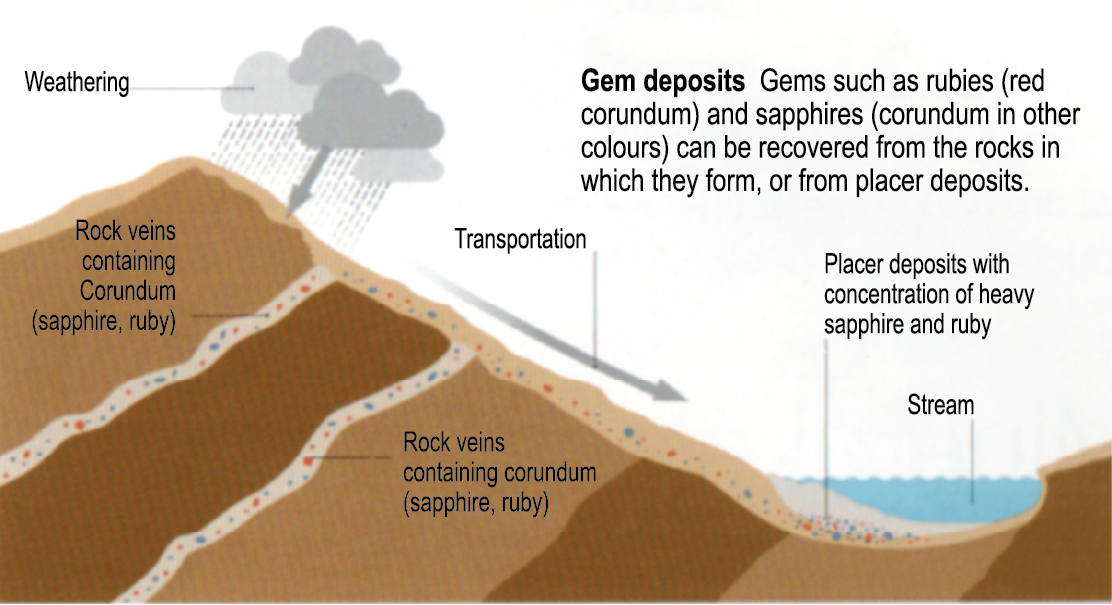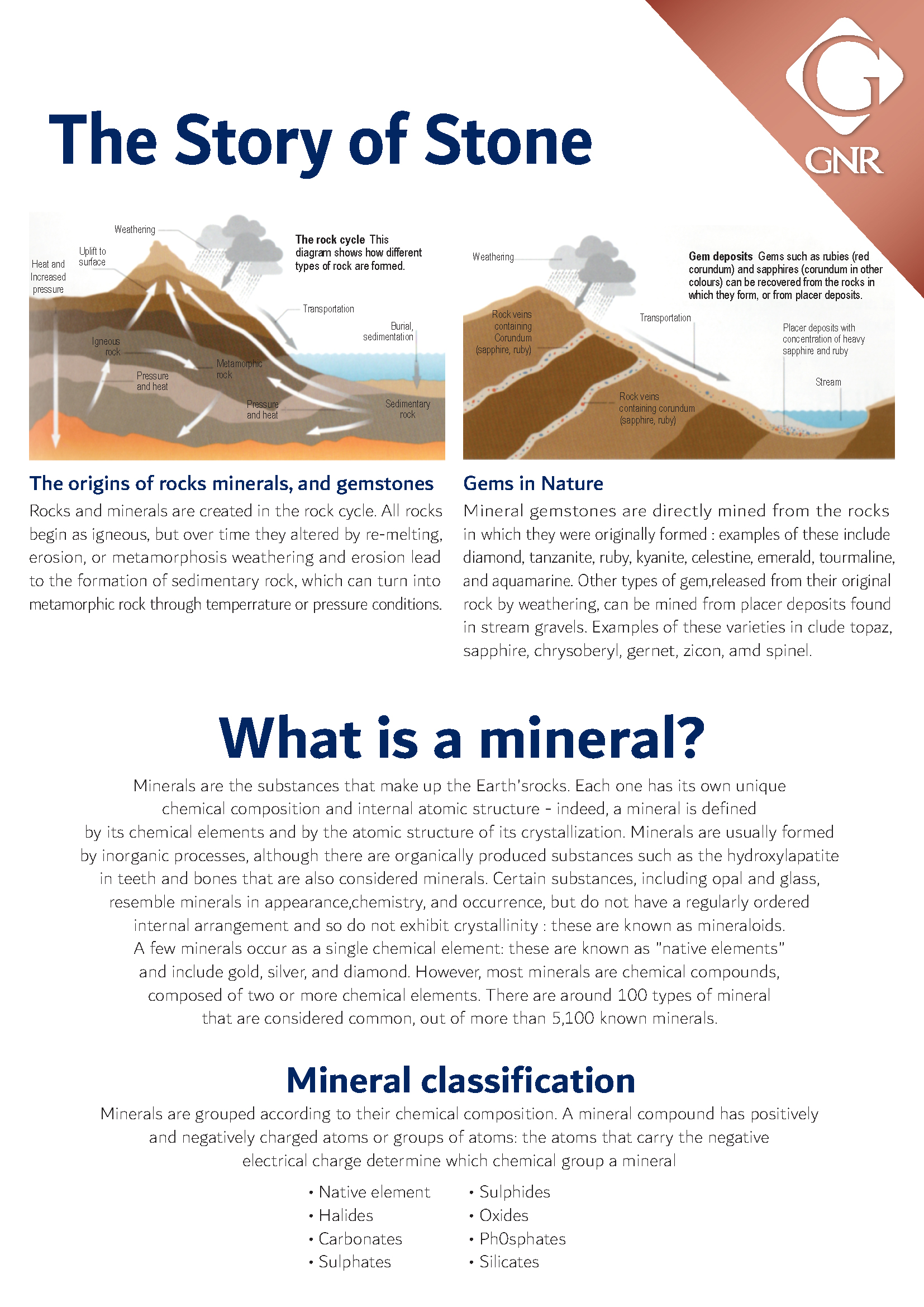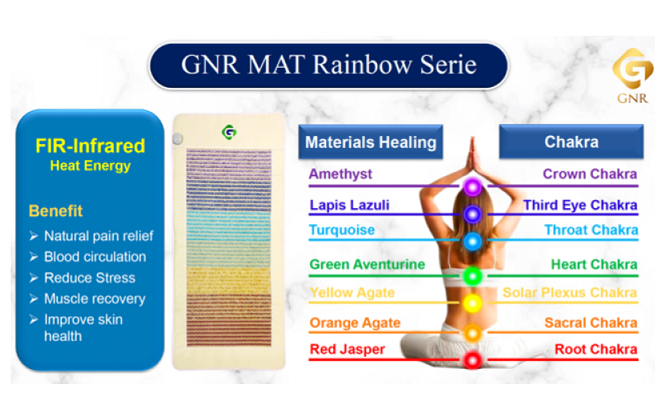The story of stones

The origins of rocks, minerals, and gemstones
Rocks and minerals are created in the rock cycle. All rocks begin as igneous, but over time they altered by re-melting, erosion, or metamorphosis weathring and erosion lead to the formation of sedimentary rock, which can turn into metamorphic rock through temperrature or pressure conditions.

Gems in Nature
Mineral gemstones are directly mined from the rocks in which they were originally formed : examples of these include diamond, tanzanite, ruby, kyanite, celestine,emerald, tourmaline and aquamarine. Other types of gem,released from their original rock by weathering, can be mined from placer deposits found in stream gravels. Examples of these varieties in clude topaz, sapphire, chrysoberyl, gernet, zicon, amd spinel.
What is minerals?
Minerals are the substances that make up the Earth'srocks. Each one has its own unique
chemical composition and internal atomic structure - indeed, a mineral is defined
by its chemical elements and by the atomic structure of its crystallization. Mineral are usaully formed
by inorganic processes, although there are originally produced substances such as the hydroxylapatite
in teeth and bones that are also considered minerals. Certain substances, including opal and glass,
resemble minerals in appearance, chemistry, and occurence, but do not have a regulary ordered
internal arrangement and so do not exhibit crystallinity : there are known as mineraloids.
A few mierals occur as a single chemistry element: these are know as "native elements"
and include gold, silver, and diamond. However, most mernals are chemical compound,
composed of two or more chemical elements. There are around 100 types of minerals
that are considered common, out of more than 5,100 known minerals





